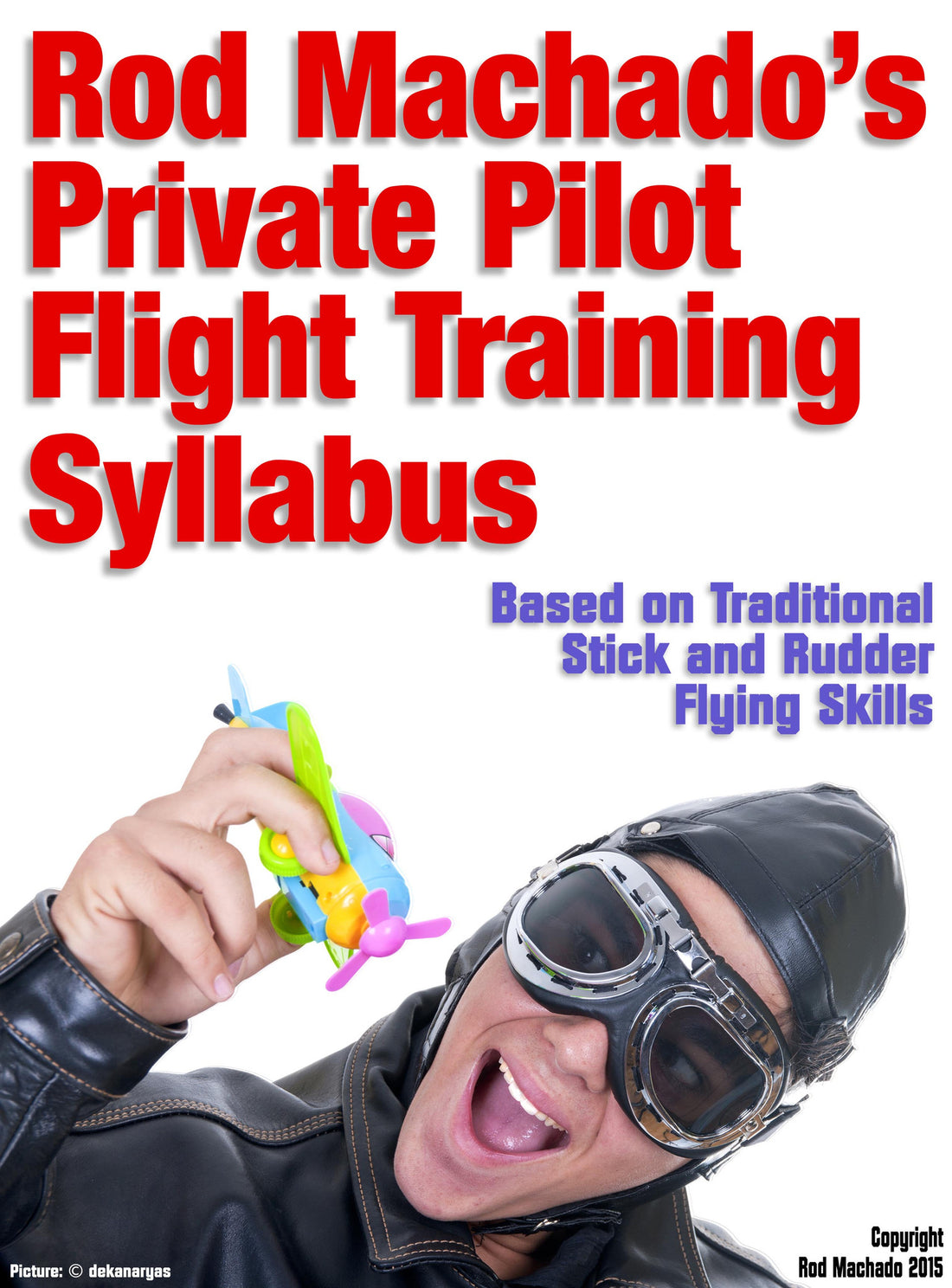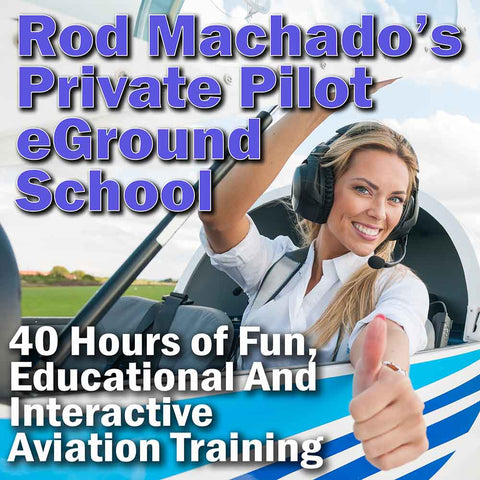 I'd like to offer you two different syllabi (FREE). The first is my Private Pilot Flight Training Syllabus. This is intended for use by the flight instructor as well as the student. Both should have a copy for their own personal use. This syllabus is the same tried-and-tested training guide that I've used to teach pilots for decades. It places a heavy emphasis on stick and rudder flying skills. If used properly, it can help a motivated student (one who is willing to do the homework and train at least two to three times a week) earn a private pilot certificate in a little over 40 hours of flight time.
I'd like to offer you two different syllabi (FREE). The first is my Private Pilot Flight Training Syllabus. This is intended for use by the flight instructor as well as the student. Both should have a copy for their own personal use. This syllabus is the same tried-and-tested training guide that I've used to teach pilots for decades. It places a heavy emphasis on stick and rudder flying skills. If used properly, it can help a motivated student (one who is willing to do the homework and train at least two to three times a week) earn a private pilot certificate in a little over 40 hours of flight time.
What this syllabus does is eliminate the irrelevant items that bloat traditional syllabi and diminish a student's ability to learn. This syllabus assumes that your student will train in a "simple" airplane, preferably one without advanced avionics (a student can learn advanced avionics in just a few hours after receiving a private pilot certificate). It's the perfect guide for any flight instructor who desires to accelerate his or her student's flight training progress as well as make the job of teaching a fun and enjoyable one. Let me explain the latter concept.
This syllabus identifies the study materials needed by the student prior to beginning flight training as well as the homework assignments the student is expected to complete prior to each lesson. All the training materials suggested in this syllabus were designed to allow the student to enjoy learning about aviation as well as to make the instructor's job easier--MUCH EASIER!
For example, most instructors tend not to enjoy spending ground time teaching a student how to plan a cross country flight. Fine! Flight instructors no longer need to do that. I've created an inexpensive interactive eLearning course that's 2.6 hours in length that explains the entire process of planning the first dual cross country flight. After listening to the course, the student will be more than capable of planning the flight that you recommend for his or her first dual cross country trip.
Additionally, this syllabus doesn't rely on "fantasy flight training" concepts. It's a practical syllabus that prepares a student to be a safe private pilot who is capable of exercising his/her license to learn. It also includes many articles in the Appendix with tips and techniques for training. I hope you find it useful. If you have any suggestions or comments on this appliance, please run them by me at (general@rodmachado.com). I'd love to hear them.
Finally, I've also included a nine-week Private Pilot Ground School Syllabus for any flight or ground instructor who is interested in teaching such a class. There's nothing quite like having students attend a real-live ground school that doesn't take six months to complete. While students can easily pass the FAA private pilot knowledge exam without attending ground school (the books recommended in the flight training syllabus allow them to do that on their own), you might think about teaching your own ground school class. Here are a few things to consider.
How to Set Up Your Own Ground School
 One of the very best things a flight instructor can do is teach a ground school. Not only does this help bring in extra income (typically this is $250/$350 per student with 10 students in each class), it also helps an instructor become a better teacher. Here’s a quick course in setting up an effective course.
One of the very best things a flight instructor can do is teach a ground school. Not only does this help bring in extra income (typically this is $250/$350 per student with 10 students in each class), it also helps an instructor become a better teacher. Here’s a quick course in setting up an effective course.
The format: Teach an eight to nine week course with classes that meet twice a week for three hours a night. Give short breaks every hour, and have coffee, water, and soft drinks available for every class. Invite your students to bring in cookies or candy for everyone if they want, too.. Start class no later than 7 p.m. and end no later than 10 p.m. Don’t play music or videos before the class or during break time. It deprives the students of the opportunity to chat and exchange stories.
Creating a course: Begin by selecting a good aviation text and a question and answer book of FAA test questions. Have students purchase a copy of each. Divide the course topics between the number of weeks chosen for training. Make a personal outline of the material covered in the FAA test questions specific to each topic you’ll discuss (i.e., aerodynamics, engine operations, FARs, etc.). Use this outline to teach from. It assures you’ll cover at least the very basic material expected in a ground school. Then add more material to help make pilots safer, instead of just teaching test questions. Assign homework from the test question book to cover topics covered in class.
Visual aids: The least expensive way to use visual aids is to visit eBay or the local school district’s surplus equipment warehouse and buy an inexpensive overhead projector. Create transparencies of the pictures, charts, tables and text you want to use (it’s relatively inexpensive to photocopy material onto transparency film). Give each student three 3x5 cards with the letters A, B or C written on them. Show multiple choice questions on the overhead and have students hold up the correct answer card. Don’t allow students to turn around and peek at each other’s answer.
Fun: Make the experience fun for students. They’ll love you for it.

